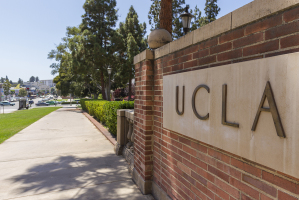Entire Towns Obliterated by Guatemala Volcano, as Seen From Space
Pictures taken by satellites show the devastation wrought by the eruption of Guatemala's Volcan de Fuego, which started erupting on Sunday, Jun. 3, 2018, sending superheated ash and smoke 20,000 feet into the atmosphere. The photos, which also include a "before" shot, put into contrast the lush hillsides and communities that have since been destroyed.
What used to be green countryside scenes and farmlands were suddenly turned into ash-gray and brown landscapes of devastation, after Guatemala's "Volcano of Fire" sent down rapidly moving pyroclastic flows that caught at least seven nearby towns in their wake.
All these were shown in stark contrast by shocking "before" and "after" photos taken by satellite imagery company Digital Globe via the Daily Mail. One shot shows the town of San Miguel Los Lotes, which is now completely covered after a rush of super-heated mud and ash that quickly crushed homes.
It was a deadly "curtain" of ash that swept through the town in just three minutes that burned people alive. It was a deadly deluge of ash and hot debris that's been estimated to top off at 1,800 degrees Fahrenheit, or about 1,000 degrees Celsius, according to CNN meteorologist Ivan Cabrera.
"This eruption at Fuego was explosive, sending hot debris down the steep sides of the volcano to make the pyroclastic flows," Erik W. Klemetti, associate professor of geosciences at Denison University, said about the first explosion.
Pyroclastic flows like the ones that overtook at least seven towns in Guatemala can race down slopes at a speed that can be impossible to outrun, even at highway speeds with a car.
"Villages are right on the foothills of the mountain, so they had no time (to escape)," Cabrera added, noting how the way the villages like El Rodeo, which were arrayed right on the foothills of the mountain, had little to no chance escaping the speeding ash and volcanic debris rushing downwards at 425 miles per hour, or around 700 kilometers per hour.
After the first major explosion on Sunday, a secondary eruption occurred on Tuesday, June 5, that sent ash billowing out more than 16,000 feet above sea level. That second explosion rained down ash and rubble over surviving towns and suburbs to the east and northeast of Volcan de Fuego.
Up to this time, search efforts in the area are still severely hampered not just by rain and mudslides but also by poisonous gas and searing temperatures that still lurk beneath the surface.
Searchers have dug up 99 bodies, and most of them are still unidentified. They still have at least 192 people reported missing on their list, according Sergio Cabañas, the executive secretary of Guatemala's National Coordination for Disaster Reduction.




























